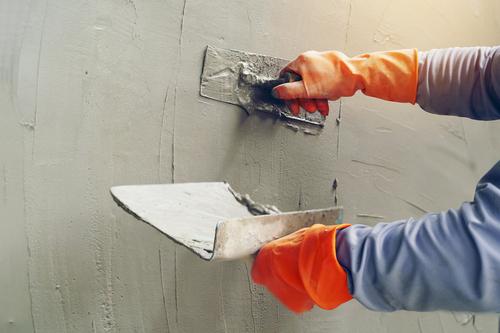Foundation foam jacking, also known as slab jacking or polyurethane foam injection, is an advanced and efficient method for lifting and leveling concrete foundations and slabs. It addresses issues such as sinking, cracking, or uneven surfaces, providing a long-lasting solution to foundation problems. Here’s a detailed explanation of how this process works and why it’s a popular choice for homeowners and contractors alike.
What Is Foundation Foam Jacking?
Foundation foam jacking is a repair method that uses polyurethane foam to lift and stabilize sunken or uneven concrete. It’s commonly employed to fix driveways, sidewalks, patios, garage floors, and even large-scale foundations. The process involves injecting a specially formulated foam under the affected slab, where it expands and hardens, effectively raising the concrete back to its original position.
An eco-friendly concrete leveling solution, foam jacking offers a sustainable approach to foundation repair. Unlike traditional mudjacking, which uses a heavy cement-based slurry, polyurethane foam requires fewer materials and causes minimal disruption to the surrounding environment. Its lightweight composition also helps preserve soil integrity while providing long-lasting support.
How Does Polyurethane Foam Jacking Work?
- Assessment and Preparation
- Professionals inspect the affected area to determine the extent of the damage and the best approach.
- Small, strategically placed holes (typically ¾ inch in diameter) are drilled into the sunken concrete slab.
- Foam Injection
- A high-density polyurethane foam is injected through the drilled holes using specialized equipment.
- As the foam is injected, it expands and fills the voids or gaps beneath the concrete.
- Lifting and Leveling
- The expanding foam applies pressure, lifting the concrete slab back to its original level.
- Technicians carefully monitor the process to ensure precise leveling.
- Curing and Finishing
- The foam hardens within minutes, creating a stable and durable base.
- The drilled holes are patched and sealed, leaving a clean and seamless surface.
Benefits of Foundation Foam Jacking
- Quick and Efficient: The entire process can often be completed in a few hours, minimizing disruption.
- Cost-Effective: Foam jacking is generally more affordable than replacing the concrete entirely.
- Durability: Polyurethane foam is resistant to moisture, erosion, and decay, ensuring a long-lasting repair.
- Eco-Friendly: Many polyurethane foams are made with environmentally friendly materials.
- Minimal Intrusion: The small injection holes leave little to no visible impact on the surface.
Applications of Foam Jacking
- Residential Repairs: Fixing uneven driveways, sidewalks, and patios.
- Commercial Properties: Leveling warehouse floors, parking lots, and building and repair foundations.
- Industrial Use: Stabilizing large-scale structures such as bridges and airport runways.
Foam Jacking vs. Mudjacking
When deciding between foam jacking and mudjacking for concrete leveling, it’s important to understand their differences:
- Materials Used:
- Foam Jacking: Utilizes lightweight polyurethane foam, which expands to fill voids and lift the slab.
- Mudjacking: Uses a heavy slurry made of cement, sand, and water to achieve the same effect.
- Weight:
- Foam Jacking: The foam is lightweight, reducing the risk of further soil settlement.
- Mudjacking: The heavy slurry can exacerbate soil settlement over time.
- Durability:
- Foam Jacking: Highly durable and resistant to moisture, erosion, and decay.
- Mudjacking: Less resistant to water and can erode or break down over time.
- Precision:
- Foam Jacking: Allows for precise control during lifting, making it ideal for delicate adjustments.
- Mudjacking: Less precise due to the nature of the slurry material.
- Curing Time:
- Foam Jacking: The foam hardens within minutes, enabling quick project completion.
- Mudjacking: Requires a longer curing time, often taking several hours to days to fully set.
- Cost:
- Foam Jacking: Typically more expensive upfront due to the advanced materials and equipment used.
- Mudjacking: Generally more affordable, but may require more frequent repairs.
- Environmental Impact:
- Foam Jacking: Many foams are eco-friendly and use sustainable materials.
- Mudjacking: The slurry is less environmentally friendly due to its weight and material composition.
Why Choose Foam Jacking Over Traditional Methods?
- Less Disruption Traditional methods, like mudjacking or full slab replacement, can take days to complete and often involve heavy machinery and extensive labor. Foam jacking, in contrast, is quick and clean.
- Precision The expansion of polyurethane foam is highly controllable, allowing for precise adjustments and leveling.
- Lightweight Solution Polyurethane foam is significantly lighter than the slurry used in mudjacking, reducing the risk of further soil settlement.
Maintenance and Longevity
To ensure the effectiveness of foam jacking, homeowners should:
- Address underlying issues such as drainage problems that may cause soil erosion.
- Schedule regular inspections to detect and fix minor issues before they escalate.
Conclusion
Foundation foam jacking with polyurethane is a modern, reliable, and efficient solution for addressing uneven or sunken concrete. Its quick application, cost-effectiveness, and long-lasting results make it a preferred choice for both residential and commercial projects. Whether you’re dealing with a sinking driveway or an uneven patio, polyurethane foam jacking offers a practical way to restore and stabilize your concrete surfaces.
Questions About Foundation Foam Jacking
1. What is foundation foam jacking?
Foundation foam jacking is a method of raising and stabilizing sunken or uneven concrete slabs using high-density polyurethane foam. The foam is injected beneath the slab, expanding to fill voids and lift the foundation back into place.
2. How does foam jacking differ from mudjacking?
Foam jacking uses lightweight polyurethane foam, while mudjacking relies on a heavier slurry of cement and sand. Foam jacking is less invasive, cures faster, and is more effective for lifting large or weak areas without adding significant weight to the soil.
3. Is foam jacking a permanent solution?
Yes, when done correctly, foam jacking is a long-lasting solution. The polyurethane foam is water-resistant, durable, and designed to withstand soil shifts and environmental factors.
4. How much does foundation foam jacking cost?
The cost of foam jacking typically ranges from $1,500 to $3,500, depending on the size and complexity of the project. It is often more affordable than full foundation replacement.
5. Can foam jacking be used for all types of foundations?
Foam jacking is effective for most concrete foundations, driveways, patios, sidewalks, and garage floors. However, it may not be suitable for certain types of structural damage or extremely large foundation failures.




